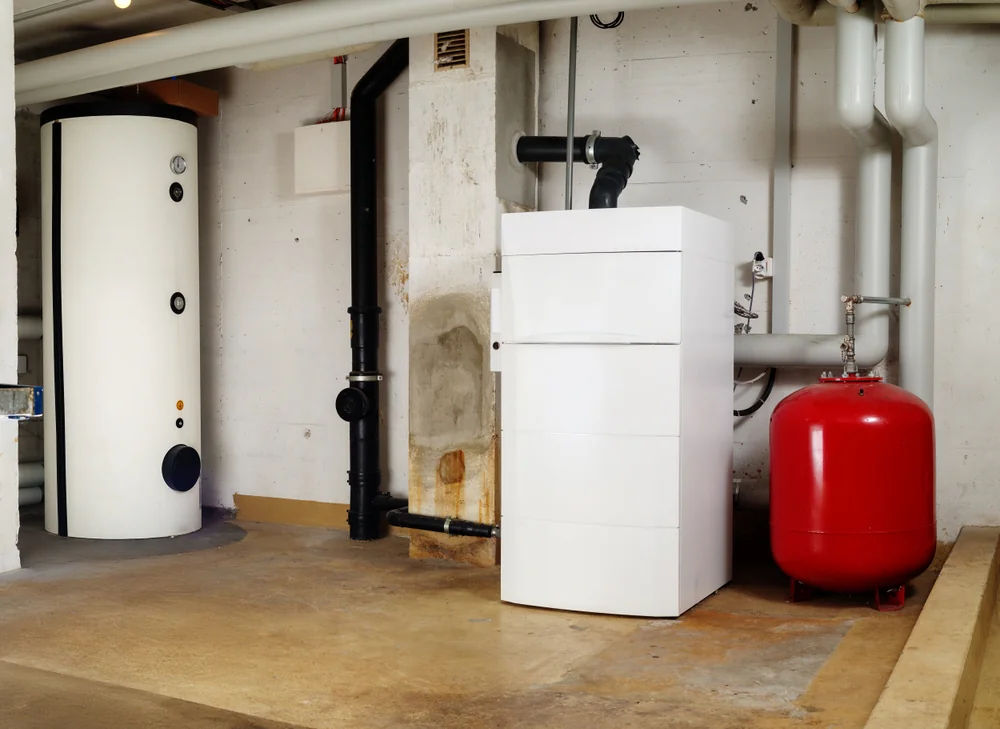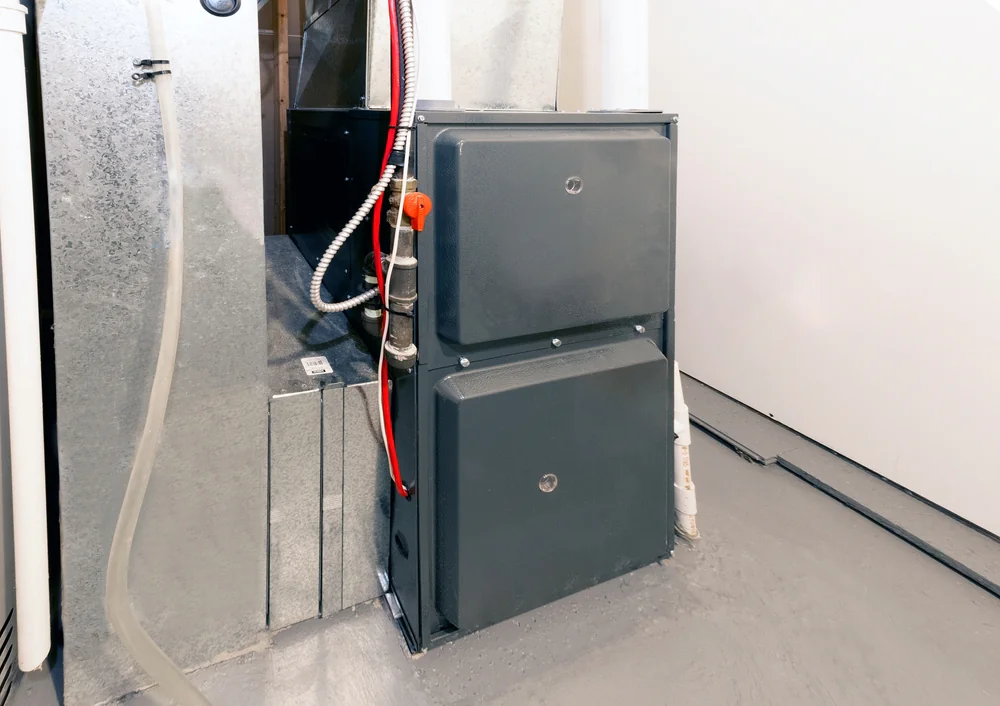Quick troubleshooting steps every Suffolk County homeowner should know before calling for expensive heating oil furnace repairs.
Share:

Summary:
The most obvious reason your furnace stops working is also the most overlooked. You might simply be out of heating oil. Even if your gauge shows some fuel remaining, running too low can cause air to enter your fuel lines and shut down your system.
Walk to your oil tank and check the gauge. If it reads below a quarter tank, you’re likely dealing with a fuel shortage. Don’t feel embarrassed—this happens to the most organized homeowners, especially during unexpectedly cold stretches when your system burns through oil faster than usual.
If your tank is empty or nearly empty, you’ll need heating oil delivery before your system can restart properly. Contact your oil supplier immediately, and remember that restarting after running completely dry often requires professional priming to remove air from the fuel lines.

Running your heating oil tank below the quarter mark creates more problems than just an empty tank. When fuel levels drop too low, your system starts drawing air instead of oil, which causes the furnace to shut down as a safety measure.
This air infiltration means even after refilling your tank, your furnace might not restart immediately. The fuel lines need to be “bled” to remove trapped air bubbles that prevent proper oil flow to the burner. Some systems can self-prime with a simple reset, while others require a technician to manually bleed the lines.
You’ll also notice that the last bit of oil in any tank contains more sediment and debris that has settled over time. This dirty fuel can clog filters and nozzles, creating additional problems beyond just running out of oil. That’s why heating professionals recommend keeping your tank at least quarter-full at all times.
The financial impact adds up quickly too. Emergency oil deliveries often carry surcharges, and if you need a technician to restart your system, you’re looking at service call fees on top of fuel costs. Many Suffolk County homeowners find that monitoring their tank weekly during winter prevents these expensive surprises.
Running your heating oil tank below the quarter mark creates more problems than just an empty tank. When fuel levels drop too low, your system starts drawing air instead of oil, which causes the furnace to shut down as a safety measure.
This air infiltration means even after refilling your tank, your furnace might not restart immediately. The fuel lines need to be “bled” to remove trapped air bubbles that prevent proper oil flow to the burner. Some systems can self-prime with a simple reset, while others require a technician to manually bleed the lines.
You’ll also notice that the last bit of oil in any tank contains more sediment and debris that has settled over time. This dirty fuel can clog filters and nozzles, creating additional problems beyond just running out of oil. That’s why heating professionals recommend keeping your tank at least quarter-full at all times.
The financial impact adds up quickly too. Emergency oil deliveries often carry surcharges, and if you need a technician to restart your system, you’re looking at service call fees on top of fuel costs. Many Suffolk County homeowners find that monitoring their tank weekly during winter prevents these expensive surprises.
Want live answers?
Connect with a Suffolk Oil expert for fast, friendly support.
Your heating oil system has several safety switches designed to shut down operation when problems occur. Before assuming you need expensive repairs, check these basic controls that commonly get switched off accidentally or trip during power outages.
Start with your emergency shut-off switch, usually a red switch mounted on the basement wall near your furnace or at the top of basement stairs. This switch can be accidentally bumped to “OFF” during routine basement activities. Simply flip it back to “ON” and wait a few minutes to see if your system restarts.
Next, check your main electrical panel for tripped circuit breakers. Heating systems draw significant power, and electrical issues can cause breakers to trip. Look for any breaker switches that appear to be in a middle position between “ON” and “OFF”—these have likely tripped and need to be reset.

The emergency shut-off switch is your heating system’s master control, designed to completely cut power to your furnace for safety or maintenance purposes. This red switch is typically located in an easily accessible area—often at the top of basement stairs or mounted on the wall near your heating equipment.
Many homeowners don’t realize how easily this switch can be accidentally turned off. Family members doing laundry, contractors working in the basement, or even pets can bump this switch without anyone noticing. During power outages, some people flip various switches trying to restore power, inadvertently turning off their heating system.
The switch should be clearly labeled “FURNACE” or “HEATING SYSTEM,” though older homes might have faded or missing labels. If you’re unsure which switch controls your heating, look for the red switch closest to your furnace or follow the electrical conduit from your heating equipment to find the right control.
When checking this switch, make sure it’s firmly in the “ON” position. A loose connection can cause intermittent problems where your system works sometimes but fails at others. If the switch feels loose or wobbly, it may need replacement—a simple job for any electrician.
Remember that turning this switch off immediately stops all heating system operation, including your hot water if you have an integrated system. When turning it back on, allow several minutes for your system’s safety controls to reset before expecting the furnace to restart.
Your thermostat controls when your heating system operates, but incorrect settings can make it seem like your furnace is broken when it’s actually working perfectly. Many service calls result from simple thermostat issues that homeowners can fix in seconds.
First, ensure your thermostat is set to “HEAT” mode, not “COOL” or “OFF.” This seems obvious, but family members sometimes adjust settings without realizing the impact. Also verify the temperature setting is at least 5 degrees higher than your current room temperature to trigger the heating cycle.
Battery-powered thermostats fail when batteries die, often displaying blank screens or erratic behavior. Cold weather drains batteries faster, so replace them at the start of each heating season. Even hardwired thermostats often have backup batteries that need periodic replacement.
Check if your thermostat is set to “AUTO” rather than “ON” for the fan setting. When set to “ON,” the fan runs continuously, which can make you think the heating system is working when only the blower is operating without heat. The “AUTO” setting runs the fan only when heat is actually being produced.
Programmable thermostats can malfunction if programmed incorrectly, with some models reverting to energy-saving modes that keep temperatures lower than expected. If you’re unsure about your programming, temporarily switch to manual mode and set a constant temperature to test if the heating system responds properly.
Older mechanical thermostats can accumulate dust and debris that interferes with their operation. Gently remove the cover and use a soft brush to clean around the components, being careful not to disturb any settings or damage delicate parts.
The reset button is your last DIY troubleshooting step, but using it incorrectly can create expensive problems. Located on your oil burner, this red button should only be pressed once, held for about 30 seconds, then released. Never press it multiple times, as this can flood your combustion chamber with oil, creating a dangerous and costly repair situation.
If these simple troubleshooting steps don’t restore your heat, it’s time to call professionals. Complex issues like clogged nozzles, faulty ignition systems, or fuel pump problems require specialized tools and expertise. Remember, attempting repairs beyond basic troubleshooting can void warranties and create safety hazards.
For reliable heating oil delivery and expert guidance on maintaining your system, we at Suffolk Oil have served Suffolk County homeowners for over 50 years with dependable service and competitive pricing.
Article details:
Share: